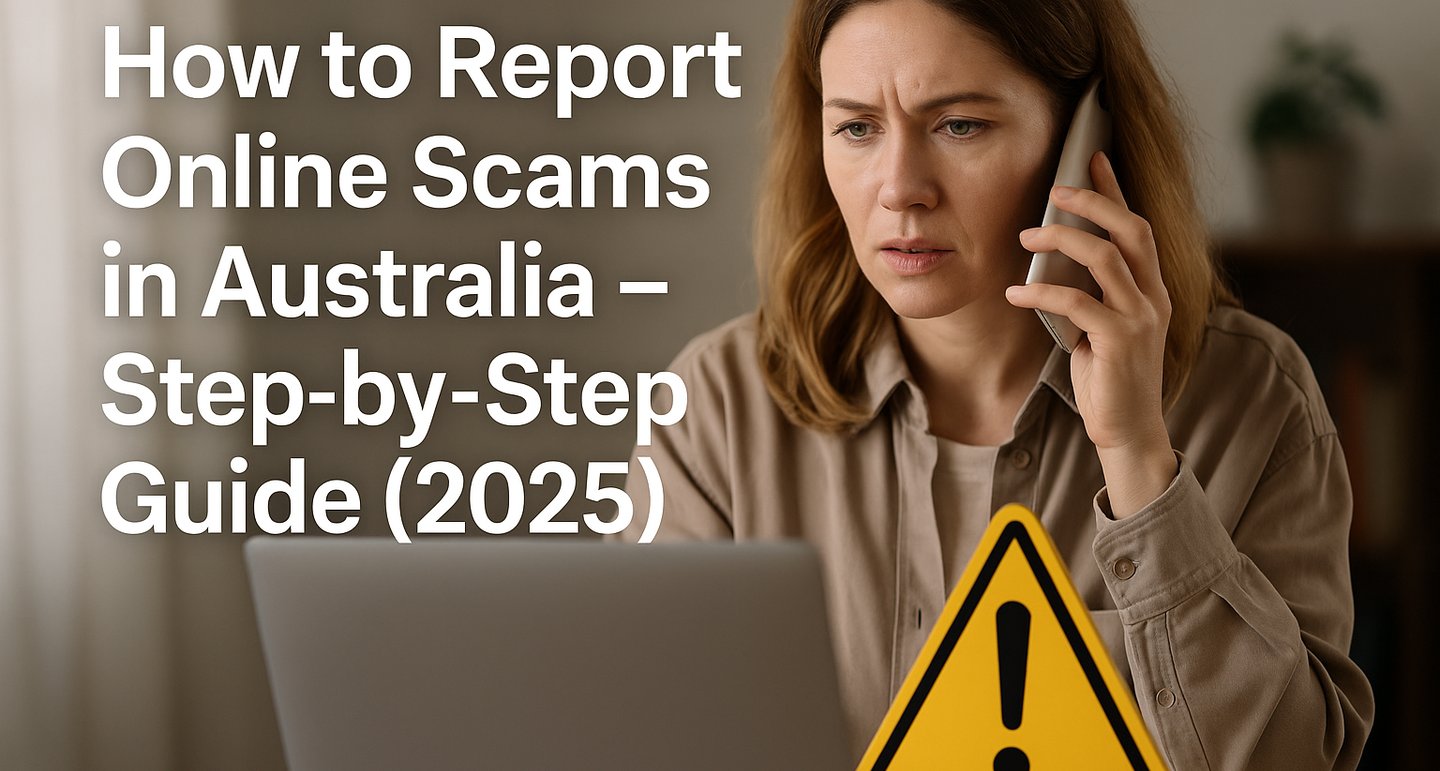How to Report Online Scams in Australia – Step-by-Step Guide


Introduction
Online scams continue to evolve in sophistication and reach. In 2025, Australians are facing everything from AI-generated phishing messages to romance scams and fake job offers. One of the most effective ways to protect both yourself and others is to report the scam as soon as possible. This guide walks you through how to do it—clearly, confidently, and accurately.
1. Why Reporting Scams Matters
Protect yourself and others: Timely reporting helps authorities trace scammers and warn potential victims.
Help build a safer digital ecosystem: Authorities like the ACCC and ACMA rely on your reports to identify scam trends and take action.
Gain access to support services: Those who have experienced fraud can get guidance and sometimes assistance on recovery.
2. Types of Scams You Can Report
Scam TypeExample ScenarioPhishing EmailsFake ATO emails requesting personal dataSMS Scams“Your parcel is on hold—click this link”Fake Job or Investment OffersUnrealistic job offers or crypto schemesRomance ScamsScammers posing as romantic interests for moneyImpersonationPretending to be ATO, banks, or services
3. Where to Report Scams in Australia
ReportCyber (Australian Cyber Security Centre—ACSC)
Best for: Cyber-related scams (e.g. phishing, tech support fraud)
How to report: Submit via [ReportCyber.gov.au]
Scamwatch (ACCC)
Best for: All scam types—investment, shopping, romance, business
How to report: Use the Scamwatch portal at [Scamwatch.gov.au]
IDCARE
Best for: Identity theft or misuse of identity credentials
How to report: Visit IDCARE.org to submit details
Local Police / State Authorities
Best for: Threats, extortion, or scams involving significant financial loss
How to report: Contact your local police station or online police reporting services
Platforms or Service Providers
Social media, shopping sites, or messaging services—always report suspicious activity directly on the platform.
4. Step-by-Step Reporting Process
Gather Evidence
Screenshot text messages, emails, or websites
Save phone numbers, usernames, or URLs
Choose the Right Platform
e.g., ReportCyber for digital threats, Scamwatch for consumer scams
Submit the Report
Provide accurate, clear information
Be factual—no assumptions
Record Confirmation
Note the reference or ticket number you receive
Follow Up
Authorities may contact you for more info
Stay vigilant and change affected passwords
5. What Happens After You Report
Authorities will log and categorize your report based on severity and frequency.
Scamwatch may issue alerts or publish trends related to your report.
You might receive guidance or referrals to support services like IDCARE.
If warranted, law enforcement may investigate.
6. Tips to Report Effectively
Never forward scam links directly—include them as text.
Always use official .gov.au URLs for scam reporting.
Use a non-scammer email/account to submit information.
If unsure, report anyway—better to delete than ignore.
Final Thoughts
Reporting scams isn’t just a civic duty—it’s your first line of defense. A simple report can help authorities stop scammers and protect others. If you're unsure what to do next, CyberShield Academy is here to empower you with trusted information and resources.
Stay safe, stay informed, and stay strong, Australia.
Safety
Empowering families to navigate online risks securely.
Community
“CyberShield Academy © 2025. All rights reserved.”